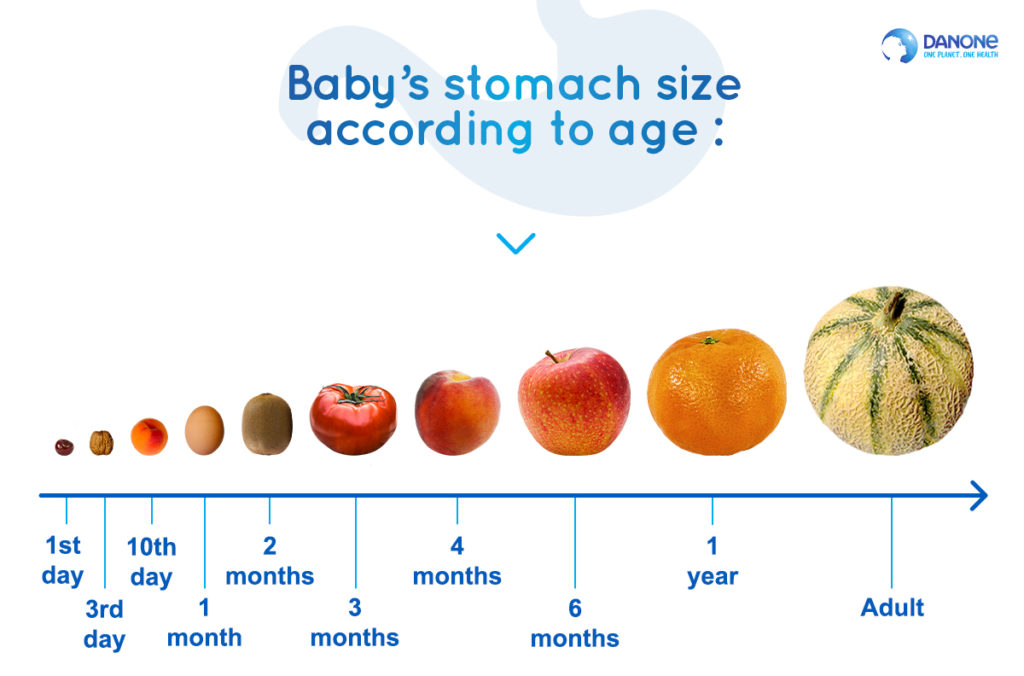Remarkably, an infant’s stomach undergoes a tenfold increase in volume capacity over a period of around 30 days. Other changes take place from birth to the early years that are affected by external stimuli, such as nutrition and environment1.
From birth to the early years, the gastrointestinal system is subject to significant structural changes3,4. For example, at birth, an infant’s stomach can hold just 5-7ml of milk and is the size of a cherry. By day three, the stomach has more than tripled in size and can hold around 22-27ml of fluid. By the end of the first month, the stomach is around the size of an egg and can hold 80-150ml.
An infant’s stomach undergoes a tenfold increase in volume capacity over a period of around 30 days. The small intestine undergoes a similarly dramatic period of growth, almost doubling in length from 275cm at birth to over 450cm by the age of five years.
Healthy development of the gastrointestinal tract and overall health
For the gut, the first weeks and months are also a period of remarkable physiological growth5. External stimuli, such as nutrition and environment, can have a strong influence on the development of the gastrointestinal system. This development is a complex, interdependent process and includes the ongoing formation of the digestive system and its enzymatic functions. For example, gastric acid secretion is necessary for the maturation of gastric pepsin activity1-3. In addition, the gastrointestinal system also develops vital neurological and biochemical processes during the first year following birth1.

References
- Shamir R, et al. Essential Knowledge Briefing, Wiley, Chichester (2015)
- Van de Wiele, Tom, et al. “How the microbiota shapes rheumatic diseases.” Nature Reviews Rheumatology 12.7 (2016): 398.
- Weaver, L. T., S. Austin, and T. J. Cole. “Small intestinal length: a factor essential for gut adaptation.” Gut 32.11 (1991): 1321-1323.
- Health & Parenting. https://philips.team-hp.com/preparing-for-breastfeeding-how-much-milk-will-my-newborn-need/ Accessed on: December 2019
- Vandenplas Y, et al. Essential Knowledge Briefing. Wiley, Chichester (2015)
BA19-485
